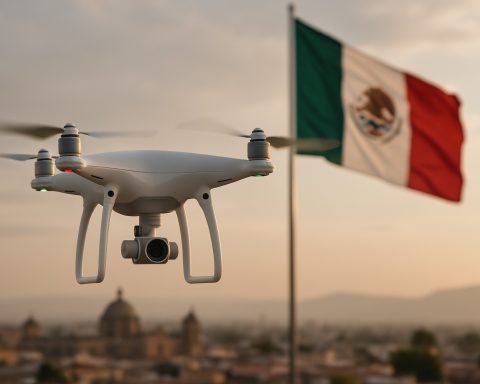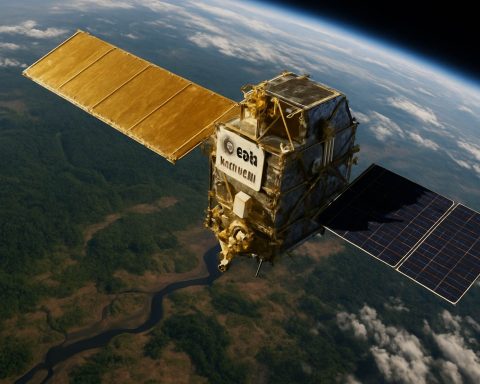- The autonomous vehicle market is rapidly expanding, with projections to grow from $1.67 billion to over $4 billion by 2031.
- Key technologies include AI, machine learning, LiDAR, radar, and high-resolution cameras, essential for vehicle navigation and safety.
- Governments, especially in Asia-Pacific, are crafting regulations and providing incentives to support autonomous driving advancements.
- High costs of sensors and computational needs pose financial challenges, particularly in emerging markets.
- Investment and collaboration among tech companies and automakers are driving innovation in autonomous driving software.
- The synergy between electric vehicles and autonomous technologies is vital for reducing carbon footprints and enhancing transport efficiency.
- The focus remains on ensuring safety and progress as autonomous vehicle technologies advance.
The tantalizing allure of a future dominated by autonomous vehicles is no longer just a narrative spun by sci-fi enthusiasts. It’s a burgeoning reality, evidenced by the autonomous driving software market’s meteoric rise. Currently valued at $1.67 billion, projections estimate a leap to over $4 billion by 2031, driven by a robust annual growth rate of 12.1%.
At the heart of this transformation lies an ingenious blend of artificial intelligence, machine learning, and state-of-the-art sensor technologies. LiDAR, radar, and high-resolution cameras are not merely add-ons but the lifeblood of modern autonomous systems. These technologies offer vehicles the “eyes” they need to understand complex environments, discern pedestrian intentions, and navigate chaotic traffic with machine precision.
This market isn’t growing in a vacuum. Regulatory bodies worldwide are crafting new frameworks to ensure these innovations hit the road safely and efficiently. Governments, particularly in Asia-Pacific, are nurturing this sector, with China leading as a trailblazer. Supportive regulations, coupled with incentives, are catapulting autonomous driving initiatives to the forefront, aiming to tackle urban conundrums like traffic congestion and environmental degradation.
Despite the optimism, the financial hurdles remain significant. The high cost of advanced sensors and the computational might needed for real-time data interpretation make deployment expensive. This poses a barrier, especially in emerging markets where budget constraints and infrastructural limitations loom large.
Intense investment and collaboration among tech giants and auto manufacturers fuel innovation. Companies such as Huawei are carving paths into this domain, debuting cutting-edge intelligent driving software. Meanwhile, initiatives like Germany’s KIRA project are testing Level 4 autonomous vehicles, marking significant strides in public transportation’s evolution.
As the dialogue surrounding urban mobility amplifies, the convergence of electric vehicles and autonomous driving technologies is becoming a focal point. The synergy promises not only a reduction in carbon footprints but also a leap in transport efficiency and safety.
The crux of this transformation? A commitment to progress without sacrificing safety. The journey toward fully autonomous vehicles remains fraught with challenges, yet the promise of safer, cleaner, and smarter transportation keeps the world’s brightest minds pressing forward relentlessly. The road ahead is paved with algorithms, sensors, and dreams—dreams that, for the first time, are inching ever closer to reality.
How Autonomous Vehicles Are Transforming the Future of Transportation
The allure of a future dominated by autonomous vehicles is gradually becoming a tangible reality. The autonomous driving software market, valued at $1.67 billion, is projected to exceed $4 billion by 2031, buoyed by a robust annual growth rate of 12.1%. This shift is underpinned by cutting-edge technologies, strategic regulations, and global initiatives.
Key Technologies Behind Autonomous Vehicles
1. Artificial Intelligence and Machine Learning: These technologies are essential for developing advanced navigation systems that allow vehicles to make real-time decisions and learn from environmental inputs.
2. LiDAR, Radar, and High-Resolution Cameras: These sensors serve as the “eyes” of autonomous vehicles, providing the detailed environmental mapping necessary to identify obstacles, pedestrians, and traffic scenarios.
3. Advanced Computing: High-performance processors are required to handle vast amounts of data from sensors for quick decision-making.
Regulatory Landscape and Global Initiatives
Regulations worldwide are evolving to accommodate the growth of autonomous technology. Governments are crafting frameworks to ensure safety and efficiency on roads. In the Asia-Pacific region, countries like China are leading the charge with supportive policies and incentives that drive innovation and development. The European KIRA project exemplifies this progress by testing Level 4 autonomous buses, which could revolutionize public transport.
Financial Considerations and Market Challenges
Despite optimism, significant financial hurdles remain due to the high cost of technology and infrastructure. The expense associated with advanced sensors and data processing equipment can be prohibitive. Emerging markets face additional challenges, such as budget constraints and existing infrastructural limitations.
The Role of Industry Collaborations
Intense collaborations between tech giants and automakers are crucial for innovation in the autonomous vehicle space. Companies like Huawei and Tesla are actively developing intelligent driving technologies that push the boundaries of what is possible.
The Future of Urban Mobility
The integration of electric and autonomous vehicle technologies promises a substantial reduction in carbon emissions, enhancing both transport efficiency and safety. The convergence of these technologies is at the forefront of addressing urban challenges like traffic congestion and pollution.
Real-World Applications and Use Cases
– Autonomous Ride-Sharing: Companies are already testing fleets of autonomous taxis in urban areas, promising a significant reduction in personal vehicle ownership and traffic congestion.
– Logistics and Delivery: Driverless trucks and drones can streamline supply chains, reducing delivery times and operational costs.
– Public Transportation: Autonomous buses and shuttles could offer seamless transit solutions in busy urban centers and rural areas alike.
Potential Drawbacks and Considerations
– Safety Concerns: Ensuring the safety of autonomous vehicles remains a priority. Testing and validation are crucial to avoid risks associated with technology failures.
– Economic Impacts: The transition may affect jobs in driving and transportation sectors, necessitating workforce retraining programs.
Actionable Recommendations
– Engage with Emerging Technologies: Businesses and individuals should explore opportunities to integrate autonomous systems into their operations to stay competitive.
– Monitor Regulatory Changes: Companies in the automotive space should stay abreast of regulatory developments to align their strategies with new compliance requirements.
For more insights into the future of autonomous vehicles, visit Tesla and Huawei.








